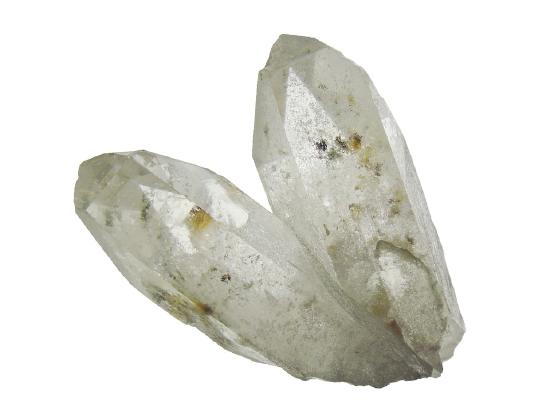
Ceramics, Cement, and Glass
 المؤلف:
LibreTexts Project
المؤلف:
LibreTexts Project
 المصدر:
................
المصدر:
................
 الجزء والصفحة:
.................
الجزء والصفحة:
.................
 14-5-2020
14-5-2020
 1931
1931
Ceramics, Cement, and Glass
Some liquids become extremely viscous as the temperature falls toward their freezing points, often because they consist of macromolecules. An example is quartz, SiO2, seen .


Figure 1.1 : A portion of the giant covalent molecule (SiO2)n. The lattice shown would extend indefinitely in all directions in a macroscopic crystal. Each silicon atom (light color) is covalently bonded to four oxygen atoms (dark color). Each oxygen bonds to two silicons. The ratio of silicon to oxygen is 2:4 or 1:2, in accord with the formula. Computer-generated. (Copyright © 1976 by W. G. Davies and J. W. Moore.). To the right is an example of this structure on a large scale, quartz.
When quartz melts (at 1610°C), a few Si—O bonds break, but most remain intact. The liquid contains large covalently bonded fragments of the original structure and is highly viscous. When the liquid is cooled, the macromolecular fragments cannot readily slide past one another to attain the regular solid structure of quartz. Instead, a collection of interconnected, randomly oriented tetrahedrons of oxygen atoms surrounding silicon atoms is formed, as shown in the figure below. The material having this structure is known as fused silica.

Figure 1.2: A feasible structure for fused silica. Although each Si atom is connected to its regular tetrahedron of O atoms and each O atom to two Si atoms, there is no overall regular arrangement as in a crystal of quartz. This situation is sometimes described as short-range order and long-range disorder and is typical of all glassy materials, including those which are not compounds of Si.
Fused silica is an example of an amorphous material or glass. It is highly rigid at room temperature, but it does not have the long-range microscopic regularity of a solid crystal lattice. Consequently it cannot be made to cleave along a plane. Instead, like ordinary window glass, it shatters into irregular fragments when struck sharply. (Window glass is primarily silica, but oxides of sodium and calcium are added to lower the melting point.) Since the microscopic structure of a glass is random, like that of a liquid, scientific purists describe glasses as highly viscous liquids, not as solids.

To the left is an example of fused silica, which has many industry applications due to its high purity, high melting temperature, and high radiation resistance.
 الاكثر قراءة في مواضيع عامة في الكيمياء اللاعضوية
الاكثر قراءة في مواضيع عامة في الكيمياء اللاعضوية
 اخر الاخبار
اخر الاخبار
اخبار العتبة العباسية المقدسة


